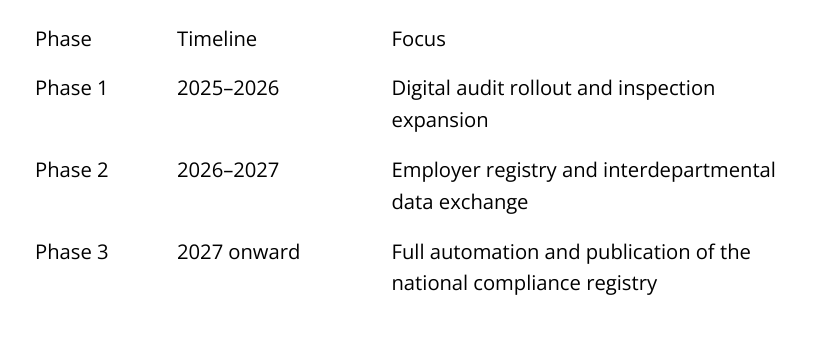This policy brief reflects reforms announced in Budget 2025 and the 2025 Annual Report to Parliament
on Immigration, which together establish a unified compliance and modernization framework across the
Global Mobility Program (GMP) and the Temporary Foreign Worker Program (TFWP). Both programs
remain essential to Canada’s immigration system, balancing labour market needs with worker
protections, accountability, and digital integration.
Global Mobility Program (GMP)
Purpose: Facilitates entry of high-value professionals, intra-company transferees, and specialists under
LMIA-exempt categories.
Key Updates from the 2025 Plan and Budget:
- Integration into IRCC’s Digital Platform Modernization (DPM) for automated compliance tracking
and data-driven oversight. - Enhanced risk-based digital audits and cross-departmental data sharing between IRCC and ESDC
to identify and address employer non-compliance. - Prioritization of significant benefit, reciprocal employment, and intra-company transfer streams.
- Establishment of a national employer registry for LMIA-exempt employers.
- Alignment with international trade agreements (CUSMA, CETA, CPTPP) to facilitate professional
mobility.
Employer Implications:
Employers using LMIA-exempt categories must maintain detailed documentation (wages, job duties,
recruitment efforts) and be prepared for real-time digital audits.
Temporary Foreign Worker Program (TFWP)
Purpose: Supports sectors with verified labour shortages by enabling the hiring of foreign workers when
qualified Canadians are unavailable.
Key Budget 2025 and Plan Measures:
- Expanded ESDC funding for both on-site and unannounced inspections.
- Employer Compliance Regime strengthened through joint enforcement with IRCC.
- Prohibition under IRPR ss. 209.2–209.3 on recruitment cost recovery, wage deductions, or
repayment clauses tied to immigration processes. - Coordination with provinces to regulate recruiters and monitor labour standards.
- Establishment of a Temporary Worker Protection Fund to provide relocation assistance and
emergency housing for vulnerable workers.
Worker Protections:
Increased access to the Open Work Permit for Vulnerable Workers (OWP-VW) and improved transition
pathways for temporary to permanent residence.
Integrated Compliance Framework
- Unified digital data between IRCC, ESDC, and CBSA to enable predictive risk analysis.
- Publication of a National Employer Compliance Registry highlighting enforcement outcomes.
- Targeted investigations for employers operating across both LMIA and LMIA-exem
Employer Takeaways
- Maintain complete and accurate records of wages, job offers, and recruitment costs.
- Remove any repayment or clawback provisions related to immigration or permanent residence
sponsorship. - Prepare for random audits and broader inspection powers.
- Develop internal compliance systems to mitigate enforcement exposure.
Implementation Timeline

For comprehensive legal analysis or strategic case support, contact Greenberg Hameed PC.
The content of this bulletin is for informational purposes only, and is not intended to provide or be relied on as legal advice.
